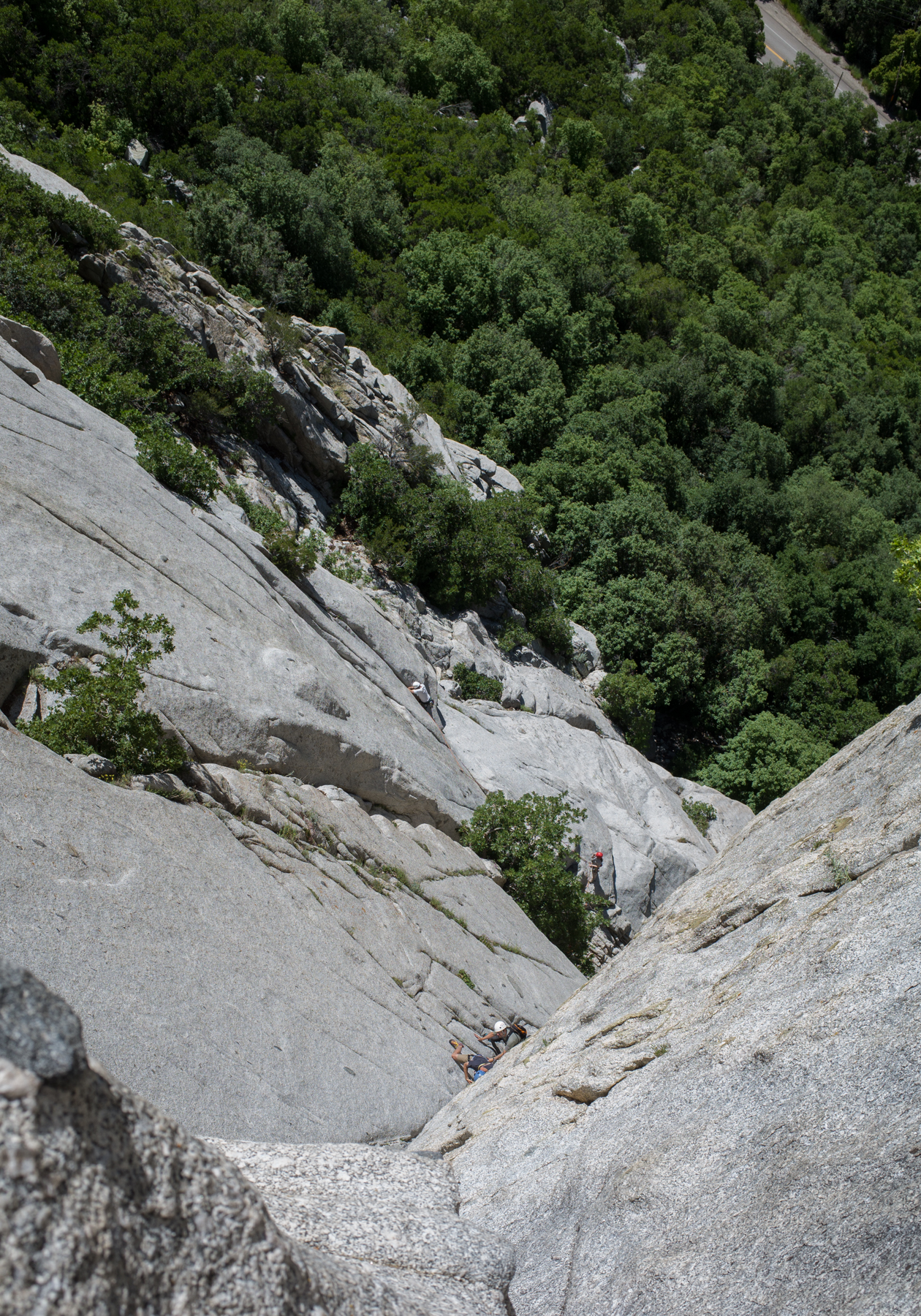
Go to a climbing crag anywhere in the United States, and you’ll hear a chorus of climbers yelling, “On Belay’” “Belay Off’” “Take’” “Climbing,” “Climb On,” etc. These communications work fine on a short route, with no wind, where you can easily see and hear your partner. However, on a long route, where wind and other conditions interfere with communication, “on belay” sounds a lot like “belay off” which also sounds a lot like “take.”
For over a decade, I’ve used a non-standard set of signals and commands when climbing. I don’t use the standard commands because, in my experience, they are too prone to confusion. When I climb, I use a simplified set of commands and signals that has tended to work better for me, especially on long alpine routes. I’ve taken this approach by emulating what my guides in Europe do and adapting their system to my needs.
Here are the commands I use:
When I get to the top of a pitch and secure myself to an anchor, I yell, “SECURE!” This means that my belayer can take me off belay. At the new belay, I first take care of whatever I need to do other than pulling up the rope. After I’ve done everything else I need to do, I make sure the belay device is handy, and as my very last task, I pull up the rope. When it goes tight, I quickly engage the rope in the belay device and yell, “ON BELAY!.”
That’s it. Only two commands. Neither of these commands sounds like the other. They don’t share any long vowel sounds (like On Belay, Off Belay, and Take.)
In the event that my belayer can’t hear me at all, the consistent practice of not pulling up the rope until I’m ready to engage the belay device provides a non-verbal communication. My partner knows that when the rope goes tight, the very next thing I’m going to do is put him on belay. If we can’t hear one another at all, he nonetheless knows that when the rope goes tight, within a minute, I will have him on belay and will begin bringing the rope up through the belay device.

This system has proven much better in my experience than the myriad of confusingly similar commands that are the general rule here in the U.S. Every time a new edition of Mountaineering, The Freedom of the Hills comes out, I look to see if they have revised the climbing commands to make it simpler and more rational. So far, they’ve kept the traditional, confusing American system. I’m hoping that this will change eventually.
